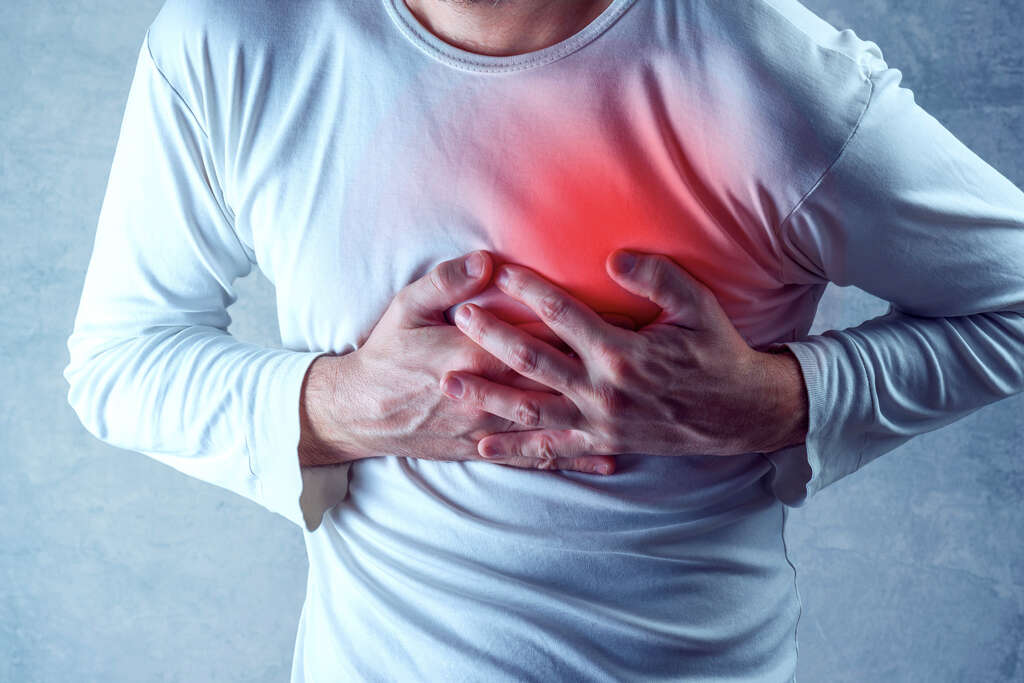Anaphylaxis Symptoms
Anaphylaxis is a serious medical condition that arises due to the exposure to an allergen. In other words, it is a severe form of allergic reaction. Similar to mild allergies, anaphylaxis begins suddenly. However, the reaction manifests with serious symptoms and requires immediate treatment. If it is not treated without delay, anaphylaxis can lead to serious complications or death.
If you are allergic to some substances, also called allergens, you may be a candidate for anaphylaxis. This is because the two conditions are similar and have similar causes. For this reason, it is important that you are aware of its symptoms. This way, you will notice if you are having an episode. Following are the top 10 symptoms of anaphylaxis.

1. Skin Rash
A skin rash is usually the first visible symptom of allergic reactions. The skin becomes red, hot, and itchy. It may also have a burning or stinging sensation depending on the type of allergen. The rash may continue even after treatment. Allergens that cause a skin rash include medications, insect bites, and foods.

2. Swelling or Edema
Swelling is another common symptom of allergic reactions, second to a skin rash. The swelling or inflammation that may start with parts of the body like the eyes, lips, hands, feet, and the face usually spreads fast to other parts of the body.
Inflammation indicates that the immune system has been activated and the allergic reaction is about to happen. The swellings can be severe and lead to problems such as shutting down eyes or causing breathlessness.

3. Breathing Difficulty
While swelling is happening externally, associated symptoms also occur. Respiratory tract symptoms are among the most dangerous symptoms of allergic reactions. The symptoms include nasal congestion, repeated sneezing, and a runny nose. Your tongue may swell and your chest and throat start tightening up.
Other symptoms such as severe coughing, inability to swallow and breathe, and wheezes in the chest may also occur and cause a severe lack of oxygen, which can be fatal.

4. Stomach Upset
Allergic reactions can affect the entire digestive system, especially if the condition is a result of eating certain foods or taking certain medications. The abdominal symptoms can be severe and lead to complications like severe cramps, nausea, diarrhea, and vomiting.
It is worth to note that these symptoms may result from other conditions. For this reason, you need to visit a doctor to carry out a diagnosis.

5. Cardiovascular Problems
Anaphylaxis can lead to cardiac and vascular symptoms, including a severe decrease in blood pressure that may lead to lightheadedness. Allergic reactions produce certain chemicals, which flood the bloodstream causing blood vessels to expand. This leads to a severe decrease in blood pressure and dizziness.
Your heart starts beating faster in order to compensate for this drop in blood pressure. If you have a heart problem, the condition can be more severe, leading to a heart spasm where one of the coronary arteries becomes narrower. This can cause severe chest pain.

6. Confusion
The anaphylactic reaction can make your brain function foggy. Acute mental confusion can cause a loss of orientation and an inability to describe things well.
Confusion is the first neurologic symptom that appears during anaphylactic reactions. If you start feeling lightheaded, tell someone that you may be having an allergic reaction.

7. Anxiety
People who have anaphylactic reactions describe going through anaphylaxis as a very weird feeling, resembling a sense of impending doom. The condition affects the entire body, such that a patient feels that something is happening even before manifesting any visible symptoms.
People who have experienced an anaphylactic reaction will usually know that they are about to get an episode due to this sensation. This feeling can be described as anxiety and is usually accompanied by a rapid heart rate.

8. Loss of Consciousness
Temporary loss of consciousness, whether it is partial or complete, can occur due to an anaphylactic reaction. Sometimes, anaphylactic patients lose their consciousness for a while and then recover. Others lose their consciousness completely. This is a dangerous sign and the patient should be treated as soon as possible.
This loss of consciousness is usually due to the drop in blood pressure. It starts as lightheadedness and then the patient becomes dizzy before falling unconscious. If you feel dizzy, tell someone around you that you are about to get an anaphylactic reaction.

9. Tingling Sensation
Tingling in the hands, feet, lips, or scalp can signify anaphylactic shock. Tingling is an abnormal sensation of the skin that is usually associated with numbness. During anaphylaxis, there is no physical cause of tingling.
It is usually transient and goes away once the cause is removed. It is painless and usually affects the legs and arms. Tingling is sometimes described as pins and needles.

10. Red Eyes
Patients suffering from anaphylaxis may present with something called conjunctival injection, which is also called a red coloring of their eyes. This symptom might be accompanied by itchiness and watering of the eyes as well.
If you are experiencing this symptom in association with other anaphylaxis symptoms, you should seek medical attention as soon as possible.












